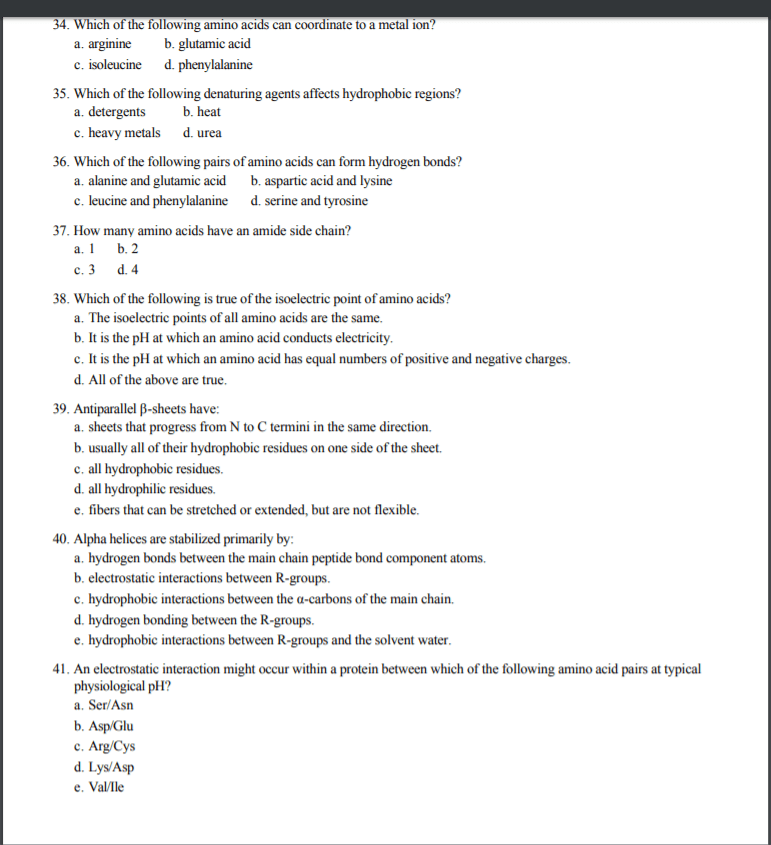BCCB2003 Lecture 2: Principles of Biochemistry BCCB2003 NOTES WEEK 2
Document Summary
Amino acid structure: amino acids are the monomer unit of proteins, amino acids contain, carboxyl group, amino group, r group, difference between each amino acid: Some r groups: what do we do with amino acids, synthesize other amino acids. Polypeptides with 50 2000 are considered proteins. Most polypeptides have less than 2000 polypeptides. Largest polypeptide is titin with other 27 000 amino acid residues. The amino acid terminal end is taken as the beginning of the polypeptide chain: how to draw peptides: Use a zig-zag to represent the main chain: synthesize non-protein nitrogen-containing compounds, phenylalanine produces tyrosine. Examples: urea, creatine, glutathione, homocysteine, primary structure, protein synthesis is the main use of amino acids, refers to the sequence of amino acids linked together. Add the main chain atoms: nitrogen, carbon, carbon (carbonyl) Add hydrogen to each: nitrogen, carbon. Add double-bonded oxygen to each carbonyl carbon. Add r groups to each carbon: the peptide bond is rigid and planar:





